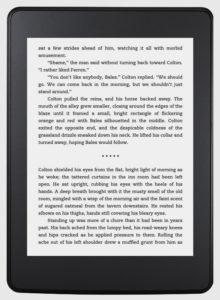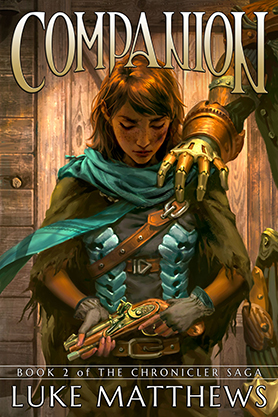I haven’t been tagged or challenged by anyone to post this list to Facebook, but I found the premise interesting enough to write a post about my list. I like the concept of books that “stayed with me” more than most other memes. And, yes, I’ve listed some series here rather than individual novels, but sometimes an individual entry is inseparable from the series it’s a part of. So, here we go:
1. Where The Red Fern Grows by Wilson Rawls – A huge formative book for me as a kid. An adventure story of the finest order about a boy and his two favorite dogs. Growing up around dogs made this book super poignant for me.
2. Rising Sun by Michael Crichton – I read every single Crichton book in high school. This was the first one that wasn’t really a high-concept sci-fi story, instead it was a tense murder mystery set amongst the clash of American and Japanese cultures. It was basically my introduction to thrillers that didn’t involve dinosaurs or magic.
3. On A Pale Horse by Piers Anthony – One of two Piers Anthony entries on this list, neither of which involves Xanth. On A Pale Horse was the first sci-fi/fantasy blend I’d ever read, and it’s still one of the best. If you’re wondering why I don’t list the entirety of the Incarnations of Immortality series, it’s because I think On A Pale Horse stands well above the rest.
4. Neuromancer by William Gibson – I came to this book way late in life, only having read it a couple of years ago. And holy shit. It’s a book that dumps you in the deep end from the get go and explains exactly nothing to you. “Here’s an extremely complex world,” Gibson tells his readers. “Go figure it out.”
5. The Chaos Walking Trilogy by Patrick Ness – Here’s a series that stuck with me, but not in a good way. The world-building in the The Knife of Never Letting Go was some of the best and most unique I’d ever seen… then all the goodwill built by the first book is just shat away by the sequels. The third book in this trilogy has actually made me wary of all trilogies (well, that and Mockingjay).
6. The Name of the Wind by Patrick Rothfuss – I was in the middle of writing my own book when I read this. It simultaneously inspired me to break out of a tough slog in the middle of my novel, and scared the shit out of me. Rothfuss’s prose is the kind of writing I aspire to, and I’m nowhere near there yet.
7. The Long Price Quartet by Daniel Abraham – One of the most unique fantasy worlds I’ve ever read. The concept of magician poets manifesting physical incarnations of ideas as powerful beings, then trying to reign those beings in for the sake of commerce, is just wildly fascinating to me.
8. Bio of a Space Tyrant by Piers Anthony – Holy shit, this series. Hard sci-fi with a hyper-realistic bent, following the main character from child refugee to ruler of the known galaxy. One of the most brutal, intense opening books I’ve ever read. Who’d’a thunk the guy that writes punny fantasy would’ve been capable of this?
9. The Gone Away World by Nick Harkaway – An intensely imaginative world and a fantastic, funny story set within it. I’m not sure I have the words to describe it, so just go read it.
10. The Belgariad by David Eddings – This was the fantasy series that birthed my love of fantasy. I’d read Tolkien prior, and it was fine, but it didn’t hook me. The Belgariad launched me into a love of fantasy that has, ultimately, led me to writing my own. You can try to debate the quality of Eddings’ prose and story all you want, but The Belgariad had a singular formative impact on my life, and is thus pretty much unassailable to me.
What are the 10 books that stuck with you?



 I just received my copy of the
I just received my copy of the  All of these factors lead to my perfect reading conditions. Twelve issue hardcovers are easy to handle and read, unlike Absolute editions or Omnibi. While I absolutely LOVE the production design on books like my
All of these factors lead to my perfect reading conditions. Twelve issue hardcovers are easy to handle and read, unlike Absolute editions or Omnibi. While I absolutely LOVE the production design on books like my 